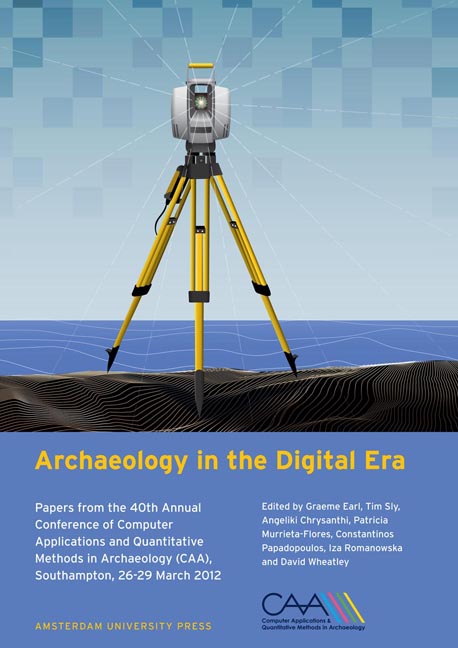 Archaeology in the Digital Era
Archaeology in the Digital Era Reconstructing the Baths of Caracalla
Published online by Cambridge University Press: 16 February 2021
Summary
Abstract:
The Baths of Caracalla are a large public bathing complex or thermae built between 212 and 216 CE and the building itself covers an area of approximately 2.4 hectares. The initial purpose of this reconstruction was to recreate the caldarium - a room with hot baths - for a thermofluid analysis to determine its thermal environment. However, this quickly morphed into an interesting, yet difficult, reconstruction of the entire bathing complexfor Rome Reborn. The reconstruction of the Baths of Caracalla required careful attention to many different facets, from room dimensions to mosaic patterns. Even though much of the structure still exists, the published, publically available data were surprisingly sparse. Given the complexity of the Baths, the data gaps and the need for an engineering-based geometry, the best option was to use two software suites - one for the geometry and the second for the application of textures.
Keywords:
Digital Reconstruction, Baths Of Caracalla, Parametric Modeling
Introduction
The digital reconstruction of the Baths of Caracalla began because I required an accurate representation of the air volume inside the caldarium or room with hot baths to create a mesh for a computational investigation of its thermal environment. This, however, quickly evolved into an interesting, yet difficult, reconstruction of the entire bathing complex for the Institute for Advanced Technology in the Humanities (IATH) project, Rome Reborn; the goal of which is to rebuild the city of Rome digitally as it existed in the fourth century CE. The baths’ reconstruction requires careful attention to many different facets, from room dimensions to mosaic patterns. For those unfamiliar with the site, the Baths of Caracalla is a large 2.4 hectare complex in the middle of an 8.9 hectare walled garden in southeast Rome built between 212 and 216 CE. It included exercise rooms, saunas, a swimming pool, as well as three rooms with varying temperatures of bath water. Even though much of the structure still exists, the publically available data is surprisingly sparse. Given the complexity of the Baths, I decided to use a parametric modeling suite which necessitated the use of a second program for the application of textures. This paper provides a brief methodological overview of this reconstruction, the archaeological data as well as on-site observations from 2008. In so doing, the paper will make apparent the major benefits and stumbling blocks of parametrically modeling the Baths of Caracalla.
- Type
- Chapter
- Information
- Archaeology in the Digital EraPapers from the 40th Annual Conference of Computer Applications and Quantitative Methods in Archaeology (CAA), Southampton, 26-29 March 2012, pp. 143 - 146Publisher: Amsterdam University PressPrint publication year: 2014


